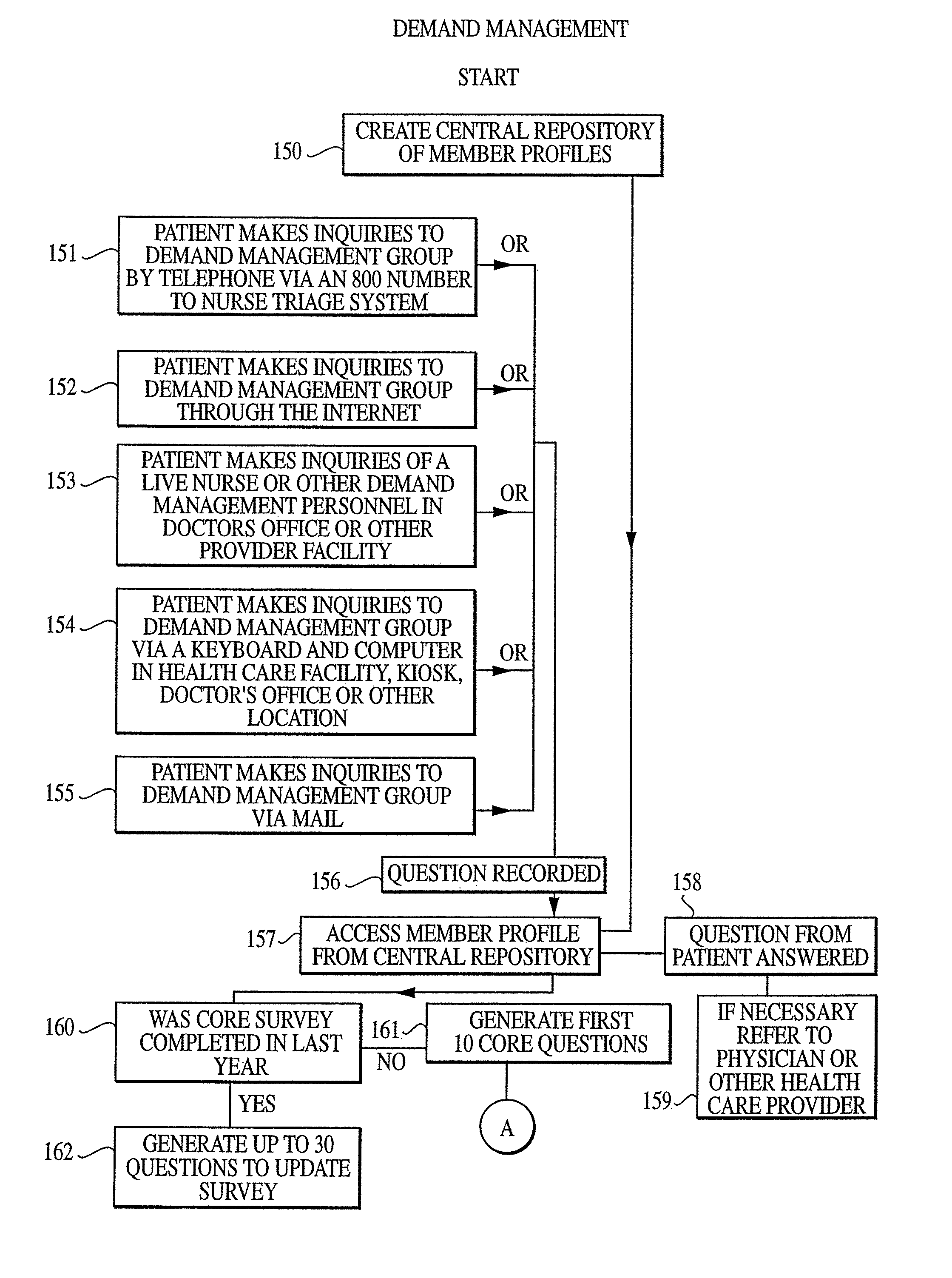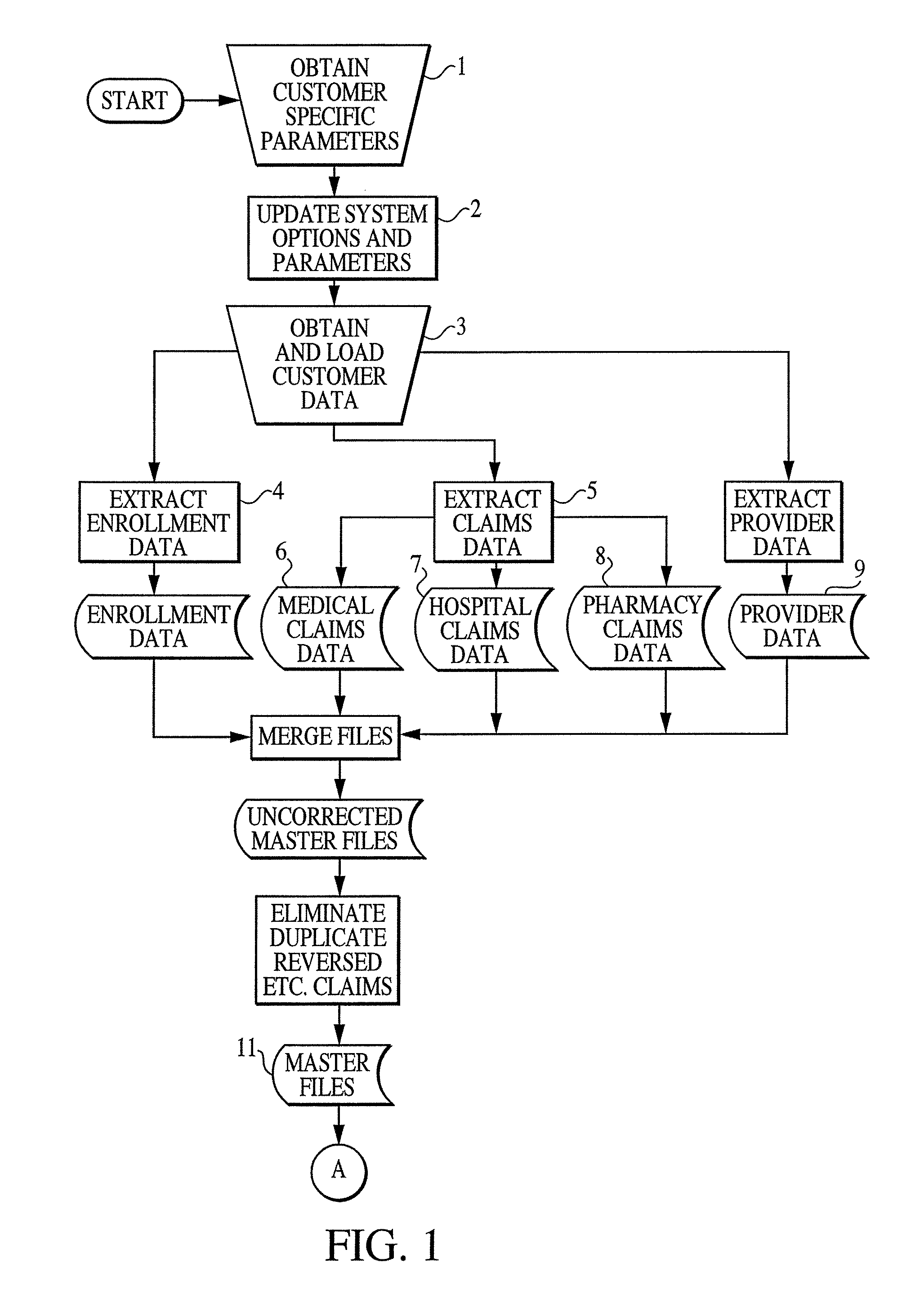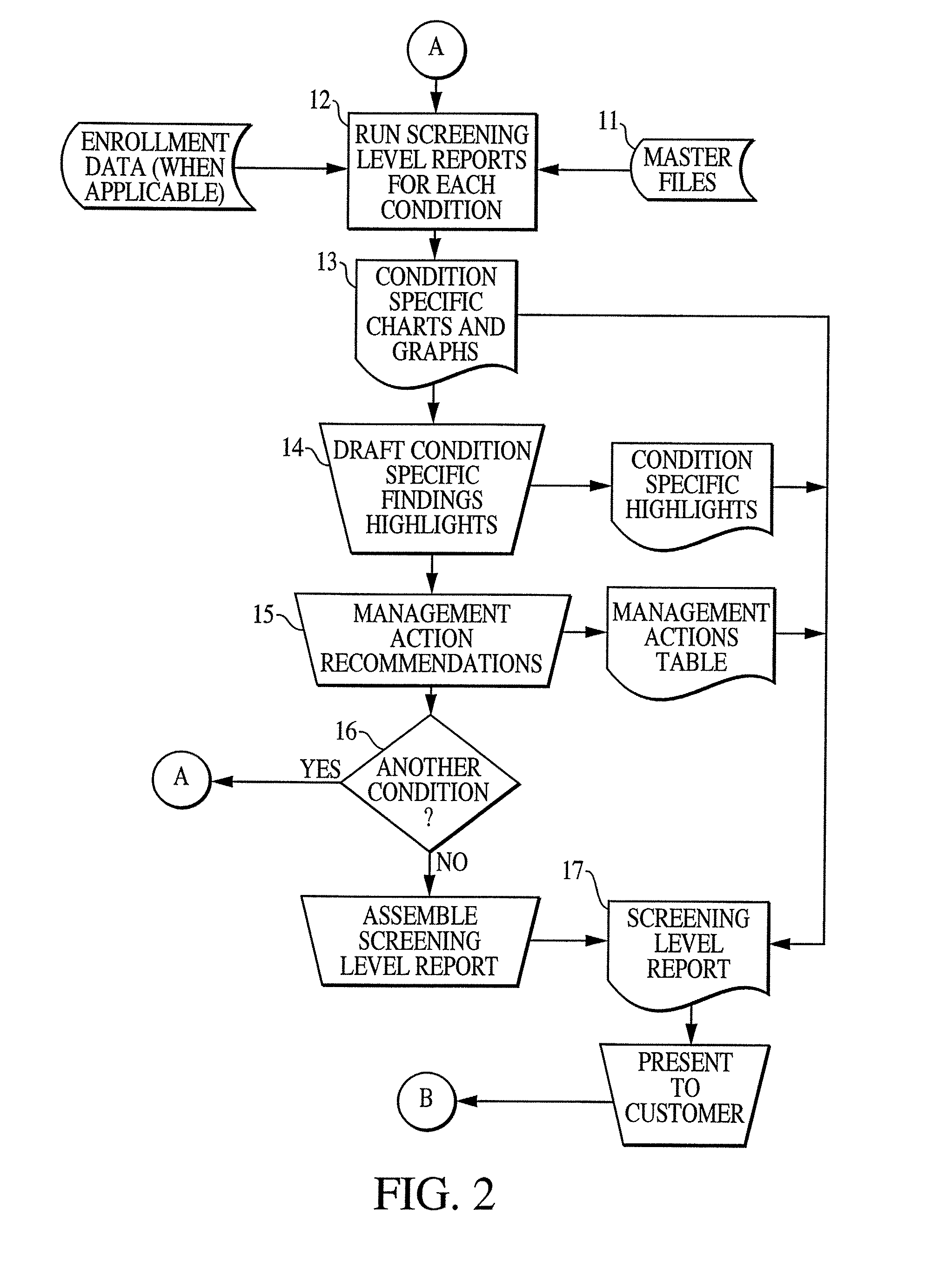Care assessment tool for health management
a health management and assessment tool technology, applied in the field of care assessment tool for health management, can solve the problems of high administrative cost of enrolling high-utilization patients in intervention programs, hinder the ability to target interventions appropriately, and continue to increase the cost of health care, so as to improve the health care of those individuals, reduce the administrative cost of enrolling patients, and reduce the effect of repetitive surveying
- Summary
- Abstract
- Description
- Claims
- Application Information
AI Technical Summary
Benefits of technology
Problems solved by technology
Method used
Image
Examples
embodiment 104
[0148]In the next step of the preferred embodiment 104, the survey proctor uses the expert system to evaluate interactively if a patient is a potential high risk user. This expert system is utilized to assess whether there are intervention programs, for example, standard intervention programs, which could minimize health risks which are likely to cause high utilization of health care by the individual 105. These intervention programs are prioritized 106.
[0149]In step 107, it is determined if the patient is eligible for such intervention programs utilizing the expert system and, based on predetermined criteria, such as age, medical condition, and the like. Then, the patient is enrolled in any appropriate new program if he or she is willing 108.
embodiment 109
[0150]In the next step of the preferred embodiment 109, if the patient asks specific medical and / or health questions, either the questions are answered, the patient is referred to his or her doctor, or the patient is referred to a standard health management program.
[0151]In step 110 of the preferred embodiment, the health care provider specialists generates reports using the central depository and the computer assisted expert system, concerning, among other things: (1) the state of plan; (2) drug evaluation; (3) comparisons, if appropriate; (4) updating the patient profiles; (5) updating the entire central repository.
[0152]Finally, the patient profiles 111 and central repository 112 are updated based on the information gathered. The central repository 112 is periodically reviewed to select patients who have not had the survey performed or who need to have their survey updated.
Patient Profile and Central Repository
[0153]The patient profiles 135 are created (FIG. 23) by assembling fro...
PUM
 Login to View More
Login to View More Abstract
Description
Claims
Application Information
 Login to View More
Login to View More - R&D
- Intellectual Property
- Life Sciences
- Materials
- Tech Scout
- Unparalleled Data Quality
- Higher Quality Content
- 60% Fewer Hallucinations
Browse by: Latest US Patents, China's latest patents, Technical Efficacy Thesaurus, Application Domain, Technology Topic, Popular Technical Reports.
© 2025 PatSnap. All rights reserved.Legal|Privacy policy|Modern Slavery Act Transparency Statement|Sitemap|About US| Contact US: help@patsnap.com



